The mountain gorilla is one of the best known gorillas thanks to the research of Dian Fossey and the movie “Gorillas in the mist”. It is also known thanks to King-Kong who, despite destroying New York City, has made this animal easily recognized by everyone as soon as they see it.
They are the largest primates of all that exist and the ones that evolutionarily resemble our species. It is said that many years ago, an African tribe found an animal that resembled humans more than everyone else they knew. They were so similar that they decided to call that animal “gorilla”, which meant “hairy person”.
For centuries, these precious animals were stigmatized as black demons and many disavowed the African origin of man and our similarity to them. We share 99% of the genetic material. Today, knowledge of this close relationship between man and gorillas advances in the same way that it affects the threat of their extinction.
There are currently two species of gorilla: the western gorilla (Gorilla Gorilla) and the eastern gorilla (Gorilla Beringei). Mountain gorillas are a subspecies of the eastern gorilla (Gorilla Beringei Beringei).
These gorillas only inhabit two mountainous places in East Africa: the Bwindi Impenetrable Forest in Uganda and the Virunga Mountains, set out in three national parks in three different countries: the Virunga national park in the Democratic Republic of the Congo, the National Park of Mgahinga Gorilla in Uganda and the Volcanoes National Park in Rwanda (PNV).
They are an endangered species. Only about 1000 individuals remain worldwide, threatened by habitat loss, poaching and the transmission of human diseases, especially respiratory infections that cause 20% of sudden deaths in these mammals.
However, there is little hope: the population is increasing little by little and they are no longer considered critically endangered within the red list of endangered animals.

These animals measure between 1.65 and 1.80 m (like humans) and weigh between about 140 to 200 kg. Males normally weigh twice as much as females. They have longer and darker hair than the rest of the gorillas that allow them to live at high altitudes and protect them from the cold. Each individual is usually easily identified by their own nasal features. Like humans, they are capable of laughing and crying.
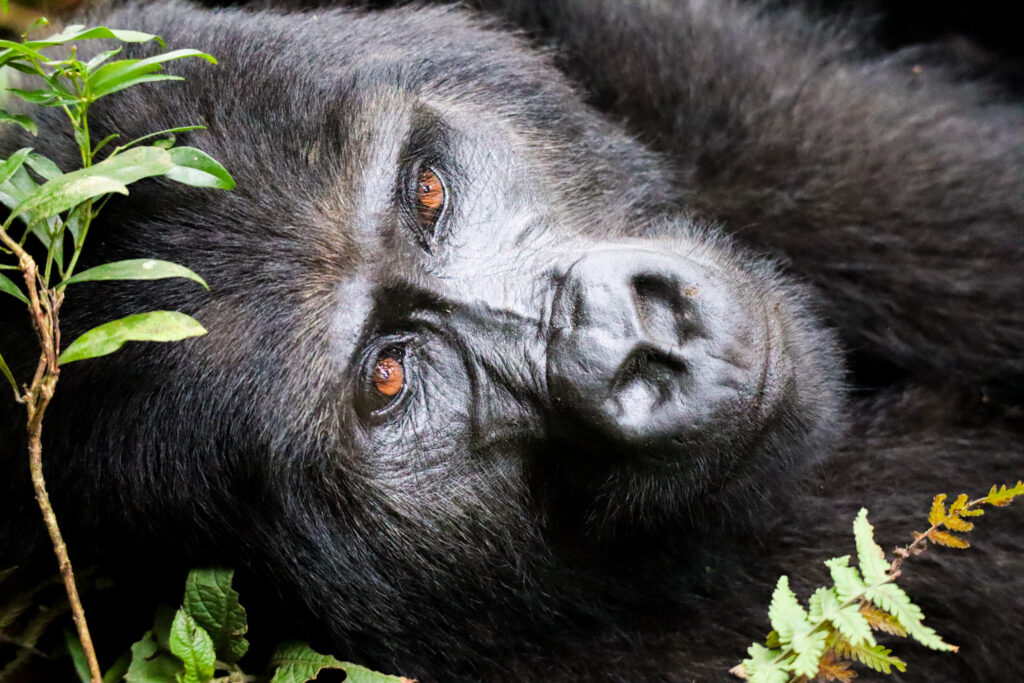
Mountain gorillas cohabit in social groups that move and feed collectively during the day and rest together at night. Groups are usually between 5 and 30 members, but the most common are 10. Each group is led by at least one dominant male known as “the silverback.” Over the years, the hair on the back of all males changes from black to silver (at 14 years), but only the strongest will become the leader of the group, protecting it, making decisions and finding food. Not all males become leaders of a group. If a mother dies or leaves the group, the silverback male takes over the the baby until she leaves the group.
The leader of the silverback group is thus the main axis of the whole group. When it dies, the group is very affected and can cause the group to disband unless there is a male to take over.

Groups are normally made up of a silverback gorilla, different females, and the young gorillas and babies. Sometimes there are groups of gorillas made up of more than one silverback male who are brothers or father-son. You can also find solitary males or that form groups where there are only males. Young male gorillas usually (but not always) leave their family group that they were born when the hair on their back begins to turn silver and after a few years of solitude, they will form a new group with females. Females also change groups when they are 6-10 years old to an established group or mate with a solitary male forming a new group. It will normally be at 10 years old, when they mate and have the first offspring. One of every three babies that is born dies before the age of three. In turn, each female only mates every 4-5 years.
An adult gorilla has the equivalent strength of 10 older men, in that when a male mountain gorilla hits his chest, they can be heard from more than a kilometer radius into the jungle. It is said that these drum-like blows to the chest can have a reproductive function to attract the attention of females, or also threatening, to deter other rival males with the hit that gives information about the opponent’s body size and competitive capacity, as well as a way of allowing the identification of each individual.
Gorillas are peaceful and calm animals, they will usually be seen deworming their companions, interacting with each other and playing. There are few occasions that conflicts arise between them, and these are mainly when two groups meet and compete for the food zone or for the mating of males with females within groups that there is more than one male or between different groups. Babies live with their mothers for the first four years of life.
Gorillas are herbivores. They spend most of the day looking for food and eating leaves, roots, herbs, stems, barks, flowers, and fruits. Sometimes they also eat small insects or worms. An adult gorilla can eat up to 35 kg a day. Gorillas really like to rest and relax when they are looking for food. When it gets dark, they usually sleep in the branches of the trees where each gorilla builds its own nest every afternoon. Only mothers share their nest with their baby.
They are considered to be very intelligent animals, in fact they are considered one of the most intelligent animals on the planet. They are known for using tools such as sticks or stones to open coconuts, measure the depth of a river, or scare off potential predators. Also in captivity, some have learned from humans to use sign language.
Being able to share an hour of time with these mountain gorillas in freedom is an unforgettable experience that we will always remember. We were able to experience it from the Bwindi Impenetrable Forest, in the Nkuringo sector. If you want to know more about our experience there, you can click here.

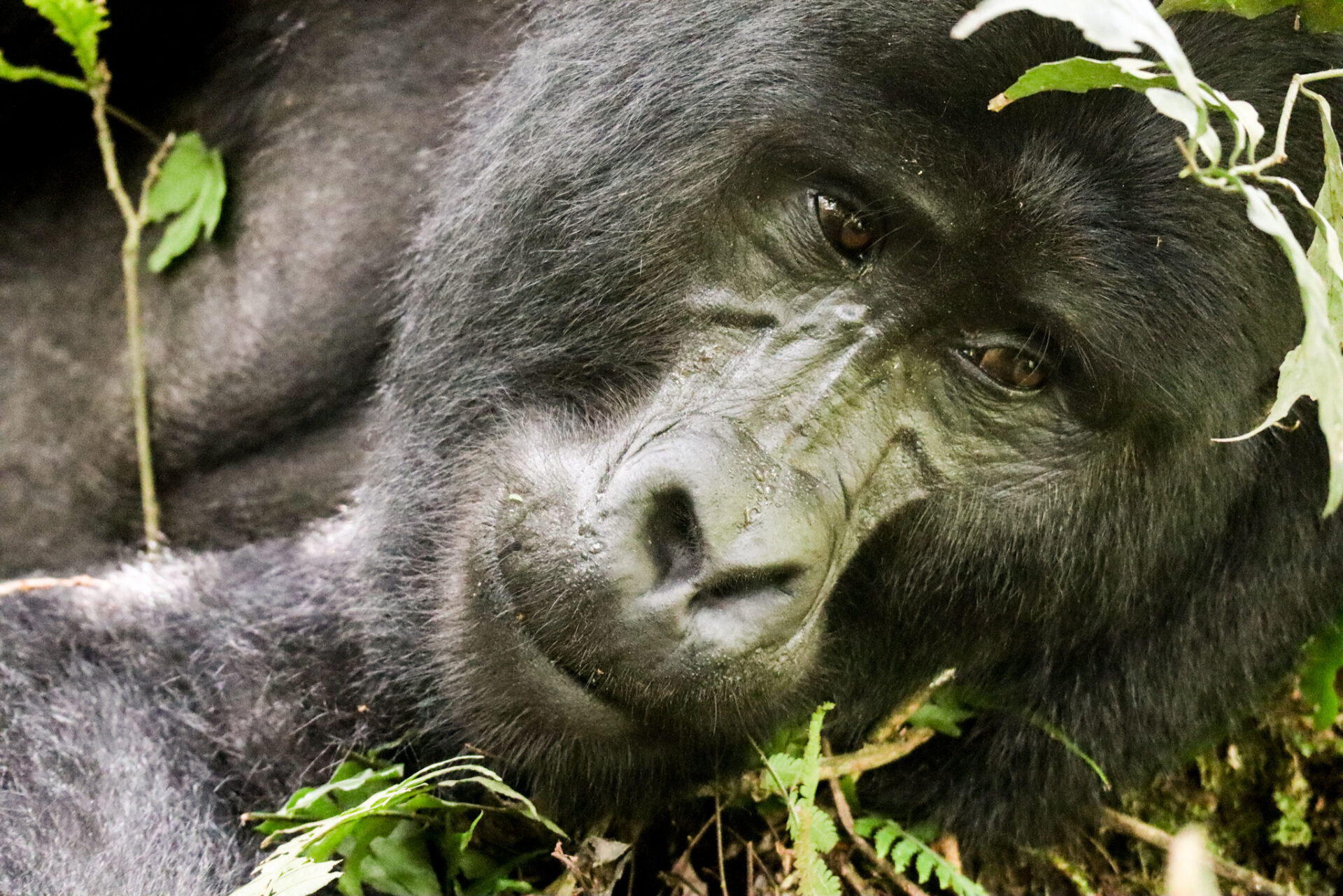
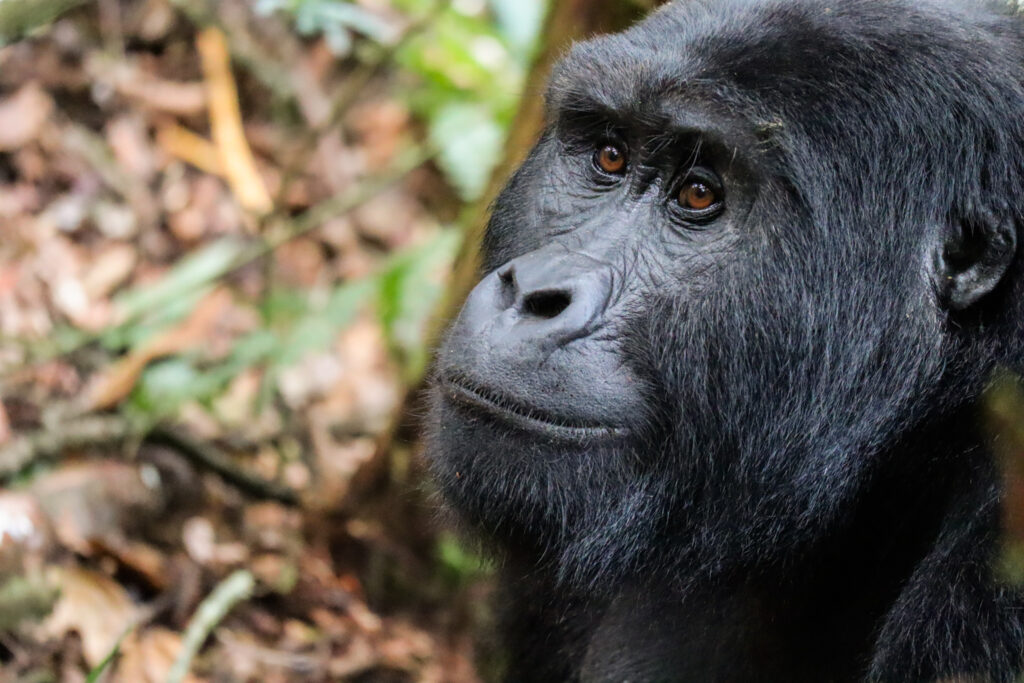
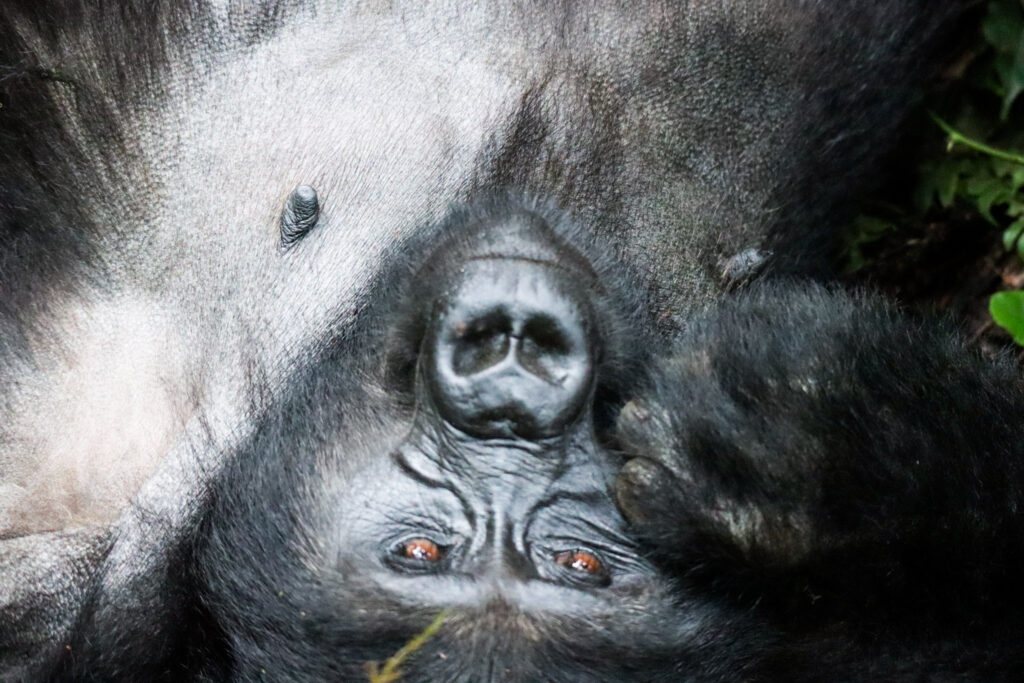
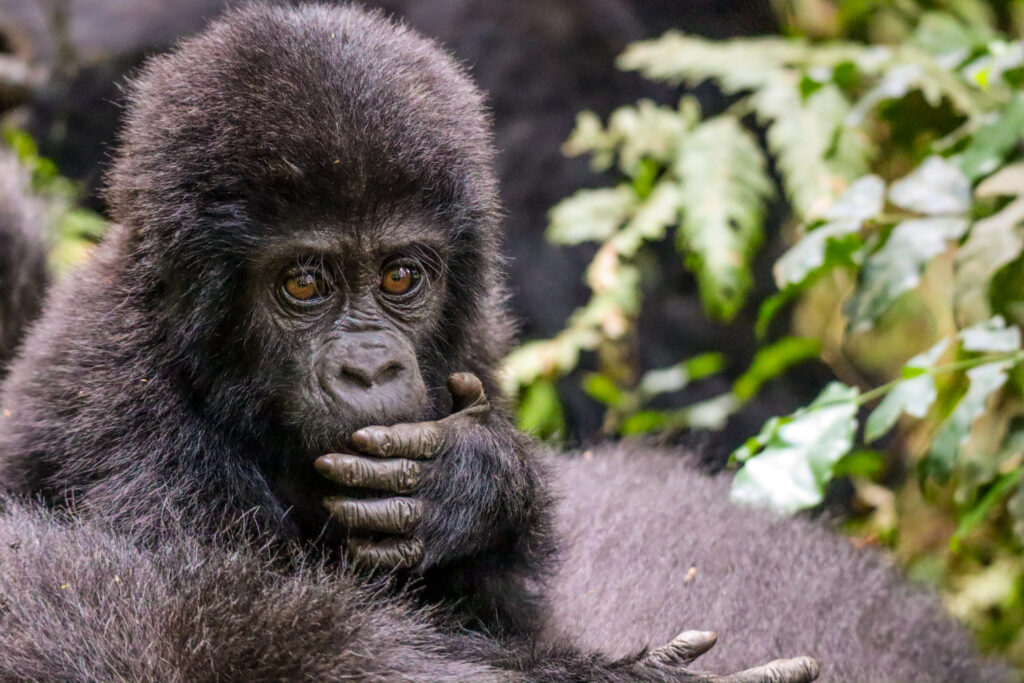
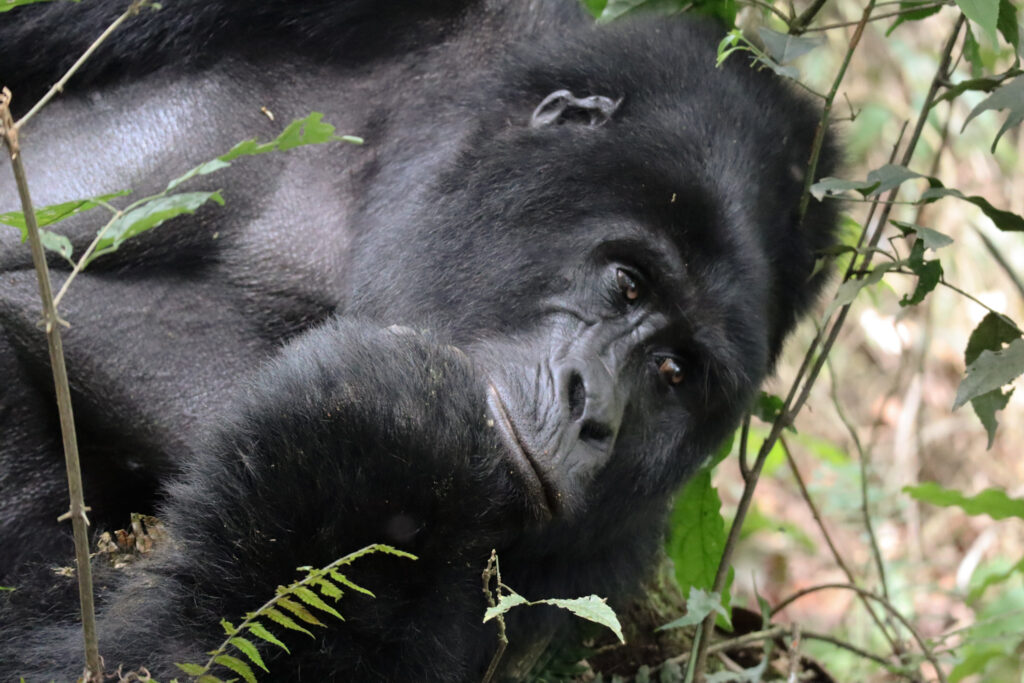

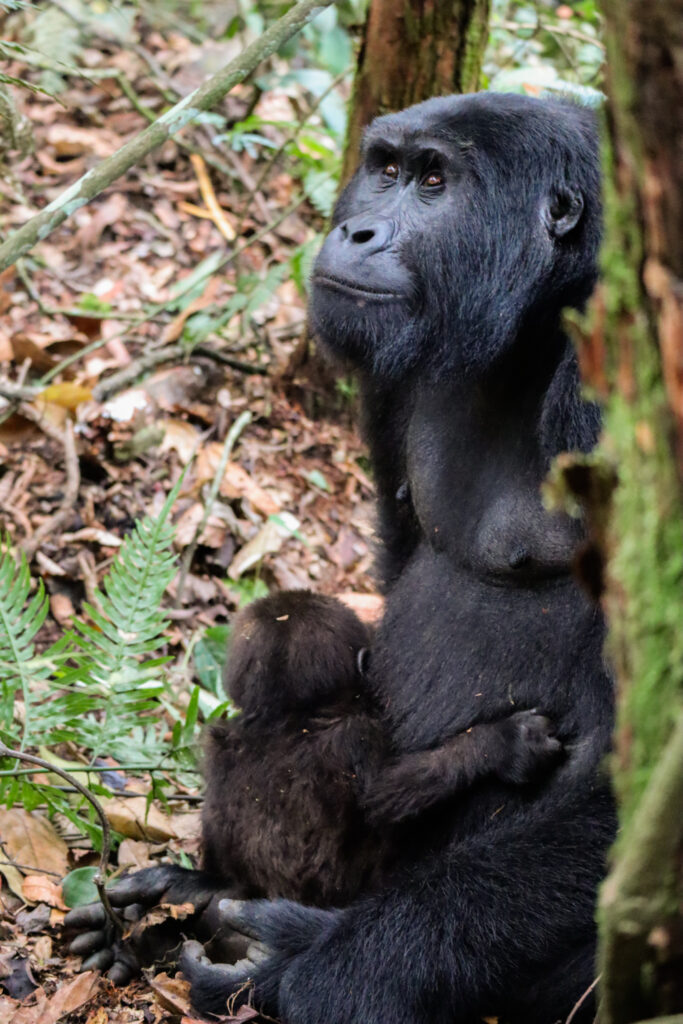
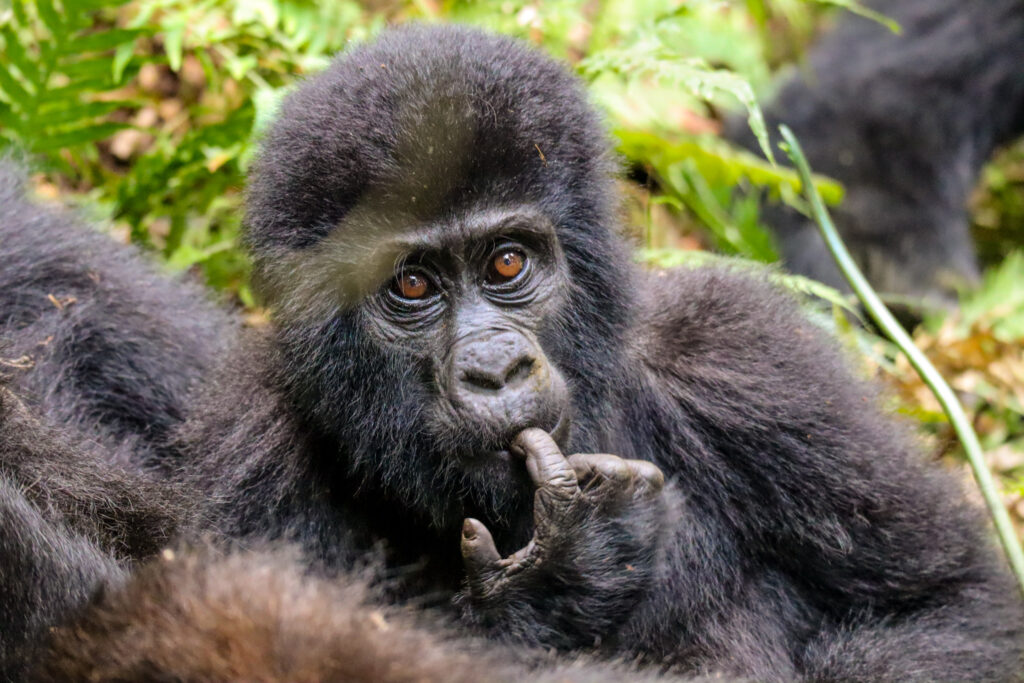


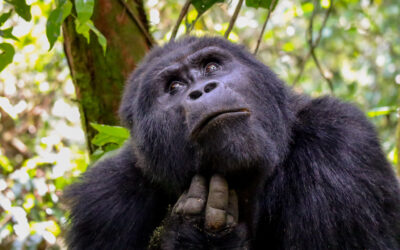




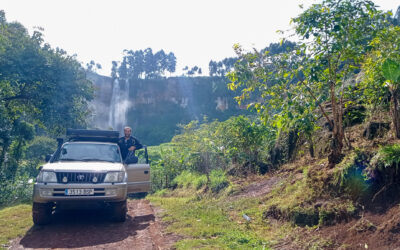

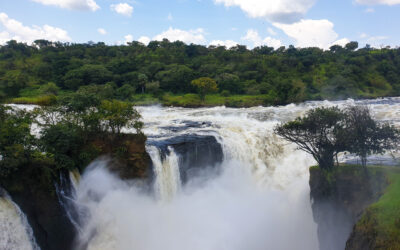

0 Comments